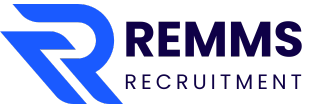
In today’s hyper-competitive job market, understanding how to hire employees effectively is one of the most critical functions within an organization. A well-executed recruitment strategy not only enhances the quality of talent attracted to a company but also plays a strategic role in operational efficiency and long-term success. This article serves as a detailed guide for employers looking to navigate the complex hiring landscape with confidence and clarity.
Understanding the Hiring Needs
Before diving into recruitment, the first step is to thoroughly understand your company’s hiring needs. Begin with a comprehensive job analysis that identifies the specific skills, experiences, and competencies required for the position.
Engaging in this exercise typically involves collaboration with department heads, who can provide insight into the challenges their teams face and the traits that make someone successful in the role.
Once the skills and competencies are clear, the next logical step is to craft a well-defined job description. An effective job description not only lists the responsibilities and qualifications necessary for the role but also conveys the company culture and values.
This dual focus helps potential candidates evaluate whether they are a good fit for the organization, and it sets the tone for the kind of candidates you wish to attract.
Attracting Candidates
Attracting the right talent is often seen as a challenge, but it fundamentally begins with employer branding. Building a positive company image is crucial, and this can be achieved by showcasing your company culture, benefits, and real employee testimonials across various platforms, such as your official website and social media channels. When considering how to hire employees effectively, employer branding lays the essential foundation.
A robust social media presence can significantly expand your reach and influence potential candidates’ perceptions of your organization.
Job postings should be strategically placed on multiple channels to maximize visibility. This includes popular job boards, social media platforms, your own website, and even working with recruitment agencies.
Tailoring your approach based on where your target candidates are most likely to be found can enhance the quality of applicants and streamline the selection process.
Screening and Selection Process
Once you have attracted a pool of candidates, the next phase involves reviewing applications. A standardized application review process is vital for ensuring fairness and increasing efficiency.
Utilizing Applicant Tracking Systems (ATS) can streamline this step by sorting applications based on predefined criteria and allowing recruiters to focus their energies where they matter most.
After narrowing down the candidates, consider conducting pre-screening interviews, either via phone or video. This preliminary step helps gauge candidates’ qualifications and cultural fit before inviting them for more in-depth, in-person interviews.
A well-structured interview process that incorporates a balanced mix of behavioral and situational questions can offer valuable insights into candidates’ skills as well as their mental processes when faced with workplace challenges. Involving multiple team members in the interview process can provide diverse perspectives and reduce individual biases.
Assessing Candidates
Candidate assessment is vital for making informed hiring decisions. One effective method is to incorporate practical tests or case studies relevant to the role, thereby allowing candidates to demonstrate their abilities in ways that standard interviews might not capture. Understanding how to hire employees effectively means going beyond resumes and identifying real-world competencies.
This not only provides a clearer picture of the candidates’ skill levels but also allows them to experience a taste of the work they might be doing if hired.
Cultural fit is another critical aspect to assess during the hiring process. Discussing company values and asking targeted behavioral questions can help uncover whether a candidate will thrive in your organizational environment.
A candidate who may have stellar qualifications but does not align with the company culture can disrupt team dynamics, affecting overall organizational performance.
Making the Offer
When you’ve identified the ideal candidate, it’s time to make them an offer. Developing a competitive compensation package is essential. This requires not only knowledge of market standards but also an understanding of what your company can sustainably afford.
It is often beneficial to benchmark salaries and benefits against industry standards to ensure that your offer is attractive.
The formal offer letter should lay out comprehensive details about the role, salary, benefits, and other terms of employment. Adequate time should be taken to review the offer letter with the candidate, as they may have questions or wish to negotiate certain terms.
Open communication during this phase can create a positive initial interaction and set the foundation for the employee’s journey within your organization.
Onboarding
Successful onboarding is crucial for integrating new hires into their roles and your company culture. A structured onboarding process helps facilitate a smooth transition and promotes early engagement. This program can include mentorship opportunities, a series of training sessions, and introductions to key team members. Part of mastering how to hire employees involves ensuring they’re set up for success from day one.
Providing new hires with the resources they need to understand their roles and the company expectations fosters a sense of belonging and encourages motivation.
Feedback mechanisms are also significant during this phase. Creating opportunities for new employees to express their concerns, suggestions, or insights can enhance their experience and also serve as valuable data for improving onboarding practices in the future.
Continuous Improvement
Navigating the hiring process should be seen as a continuous endeavor rather than a one-time event. Regularly analyzing hiring metrics, such as time-to-fill vacancies, quality of hire, and employee retention rates, allows employers to identify trends and areas for improvement.
These insights can inform adjustments to your hiring strategies, enabling you to attract and retain top talent more effectively over time.
Moreover, ongoing training for hiring managers involved in the recruitment process can ensure that they remain current with best practices and understand the nuances of effective candidate evaluation.
By fostering a culture of learning within the hiring teams, employers can create more efficient and effective recruitment strategies.
Conclusion
Navigating the hiring process is not merely an operational task; it is a strategic endeavor that directly impacts organizational success. By dedicating time and resources to understand hiring needs, attract the right talent, assess candidates thoroughly, and foster an effective onboarding experience, employers can master how to hire employees in a way that drives long-term value.
The ultimate goal should be a balanced approach that prioritizes both organizational needs and candidate experience, ensuring your company not only hires effectively but also cultivates an engaged and high-performing workforce. With continuous analysis and refinement, your hiring process can stay competitive in today’s dynamic talent market, leading to sustained organizational success.
